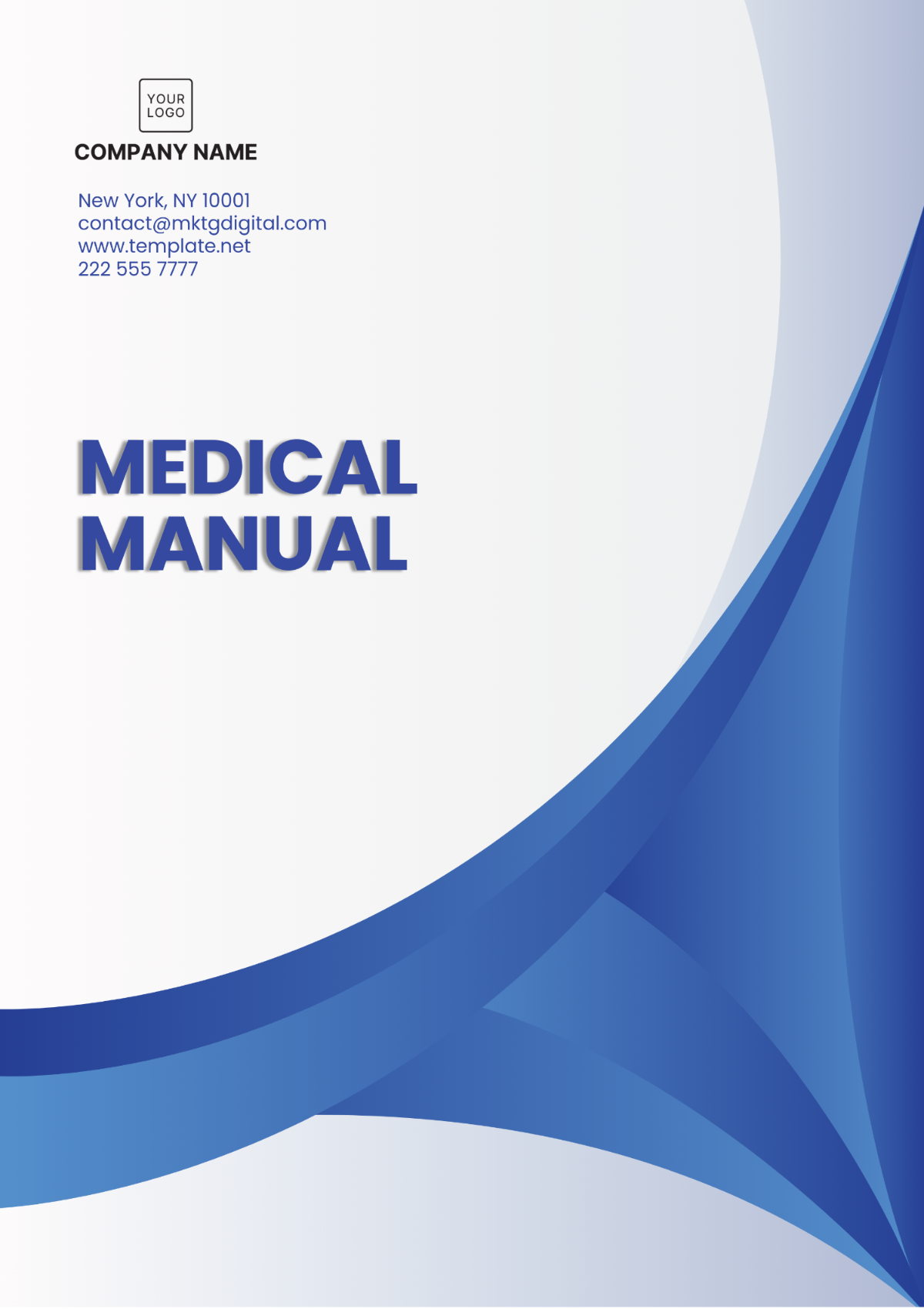Free Medical Manual

Prepared by: [YOUR NAME]
Introduction
This Medical Manual serves as a guide for healthcare professionals to provide the highest standards of patient care. It covers a comprehensive range of medical topics, procedures, and protocols.
Patient Assessment
Vital Signs Measurement
Vital signs are critical indicators of a patient's physiological status. The following list summarizes the key vital signs and normal ranges:
Temperature: 97°F to 99°F (36.1°C to 37.2°C)
Heart Rate: 60 to 100 beats per minute
Respiratory Rate: 12 to 20 breaths per minute
Blood Pressure: 120/80 mmHg
Physical Examination
The physical examination involves systematic checking of a patient’s condition. The following table outlines areas to assess:
Body Area | Method |
|---|---|
Head and Neck | Inspection, Palpation |
Chest | Auscultation, Percussion |
Abdomen | Inspection, Palpation, Percussion, Auscultation |
Limbs | Inspection, Palpation, Range of Motion Tests |
Common Medical Conditions
Hypertension
Hypertension, or high blood pressure, is a common condition that, if left untreated, can lead to severe health complications.
Diagnosis: Blood pressure readings on two separate occasions with systolic >140 mmHg and/or diastolic >90 mmHg.
Treatment: Lifestyle changes, and antihypertensive medications.
Diabetes Mellitus
Diabetes Mellitus is a chronic condition characterized by high levels of glucose in the blood.
Diagnosis: Fasting plasma glucose ≥126 mg/dL, 2-hour plasma glucose ≥200 mg/dL during an OGTT, A1c ≥6.5%.
Treatment: Lifestyle changes, insulin therapy, oral hypoglycemic agents.
Medical Procedures
Intravenous (IV) Cannulation
IV cannulation is a procedure in which a tube is placed inside a vein to administer medications, fluids, and gather samples.
Indications: Administration of IV medications, fluids, and blood products.
Procedure: Ensure sterility, select the appropriate vein, and insert the cannula using an aseptic technique.
Cardiopulmonary Resuscitation (CPR)
CPR is a lifesaving technique useful in emergencies such as a heart attack or near drowning.
Indications: Cardiac arrest, unresponsive patient with no breathing.
Procedure: Perform 30 chest compressions followed by 2 rescue breaths, repeat until help arrives.
References
This manual references multiple clinical guidelines and textbooks to provide evidence-based information. Further details and references can be found in the appendices.
- 100% Customizable, free editor
- Access 1 Million+ Templates, photo’s & graphics
- Download or share as a template
- Click and replace photos, graphics, text, backgrounds
- Resize, crop, AI write & more
- Access advanced editor
Ensure compliance and efficiency in healthcare with Template.net’s Medical Manual Template. Customizable and editable in our Ai Editor Tool, this template covers medical protocols, procedures, and standards, ensuring that your healthcare facility operates smoothly and safely. It’s the perfect resource for clinics, hospitals, and medical professionals. Make it yours today!





























